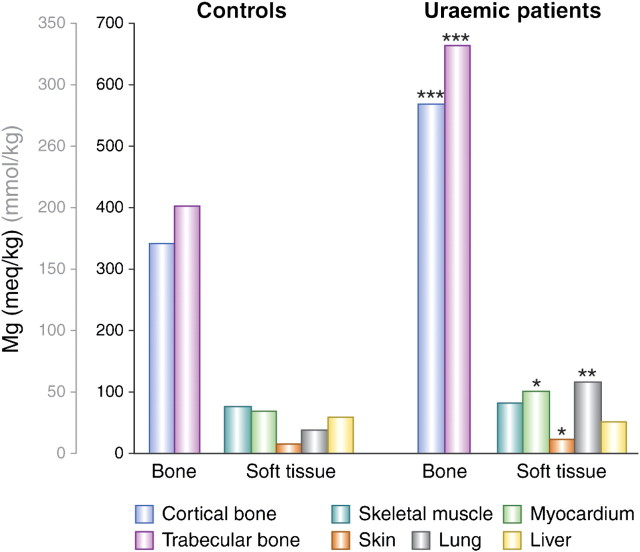Fig. 6.
Bone and tissue magnesium content in uraemic patients compared with controls [84]. Tissues were obtained from 33 patients with ESRD and 11 non-uraemic patients after death. Twenty-five of the renal patients had been dialysed for a period of ∼23 months with a dialysis fluid containing 1.3 mEq/L (0.65 mmol/L) magnesium. Plasma magnesium concentrations were 2.57 ± 0.41 mEq/L (1.29 ± 0.21 mmol/L). Most of the controls had died in road traffic accidents. Their plasma magnesium concentrations were 1.57 ± 0.08 mEq/L (0.79 ± 0.04) mmol/L. The soft tissue samples were dried and defatted. The result is given as milliequivalent per kilogram fat-free dry solids. For myocardium, skin and lung, mean magnesium concentrations were significantly higher in uraemic patients; there was no difference for skeletal muscle or liver. The bone was defatted and then dried. Results are given as milliequivalent per kilogram ashed weight. Although the mineral content of uraemic trabecular bone was decreased by 8% and of cortical bone by 5%, there was still a significant increase in bone magnesium content on a dry weight basis in uraemic patients (*P < 0.01; **P < 0.0005; ***P < 0.0001 versus controls) (2 mEq/L = 1 mmol/L). Reproduced with permission from Contiguglia et al. [84].

